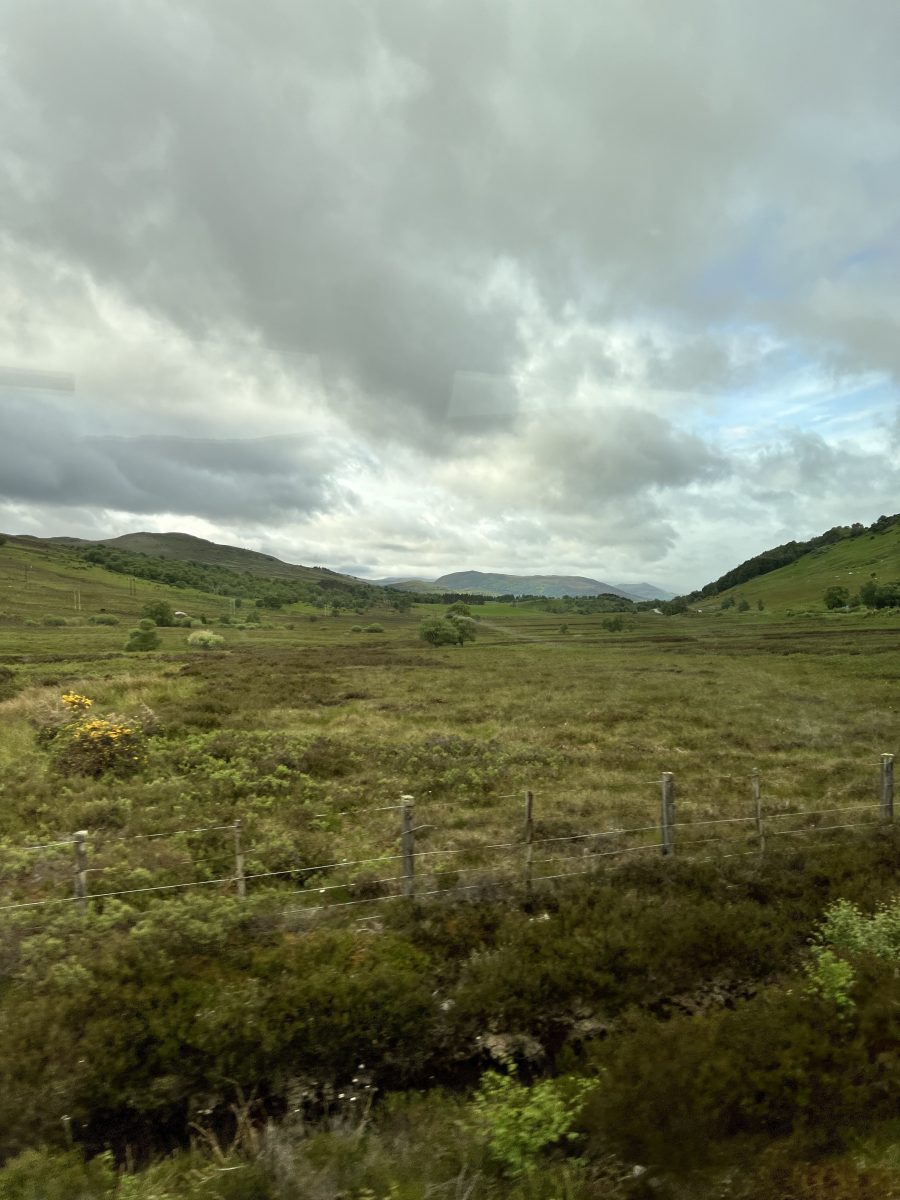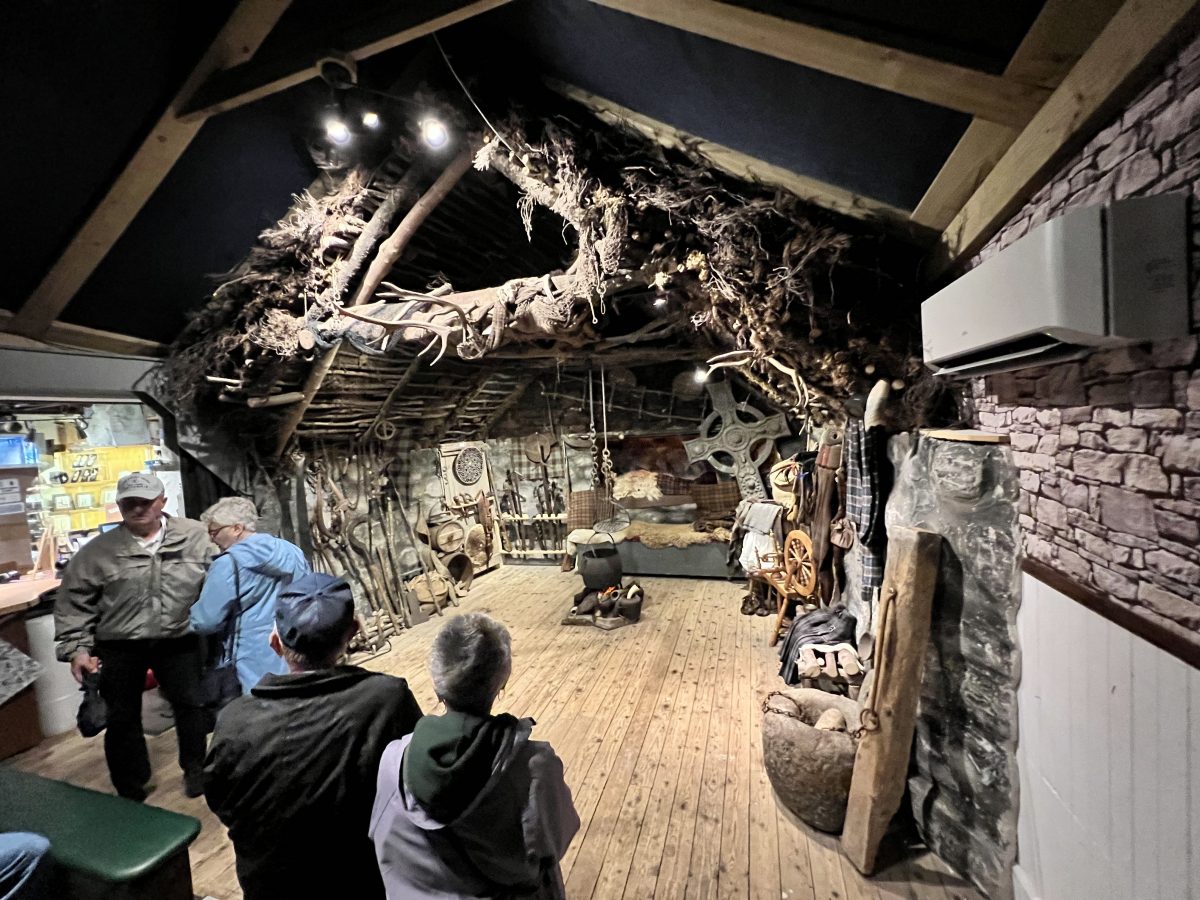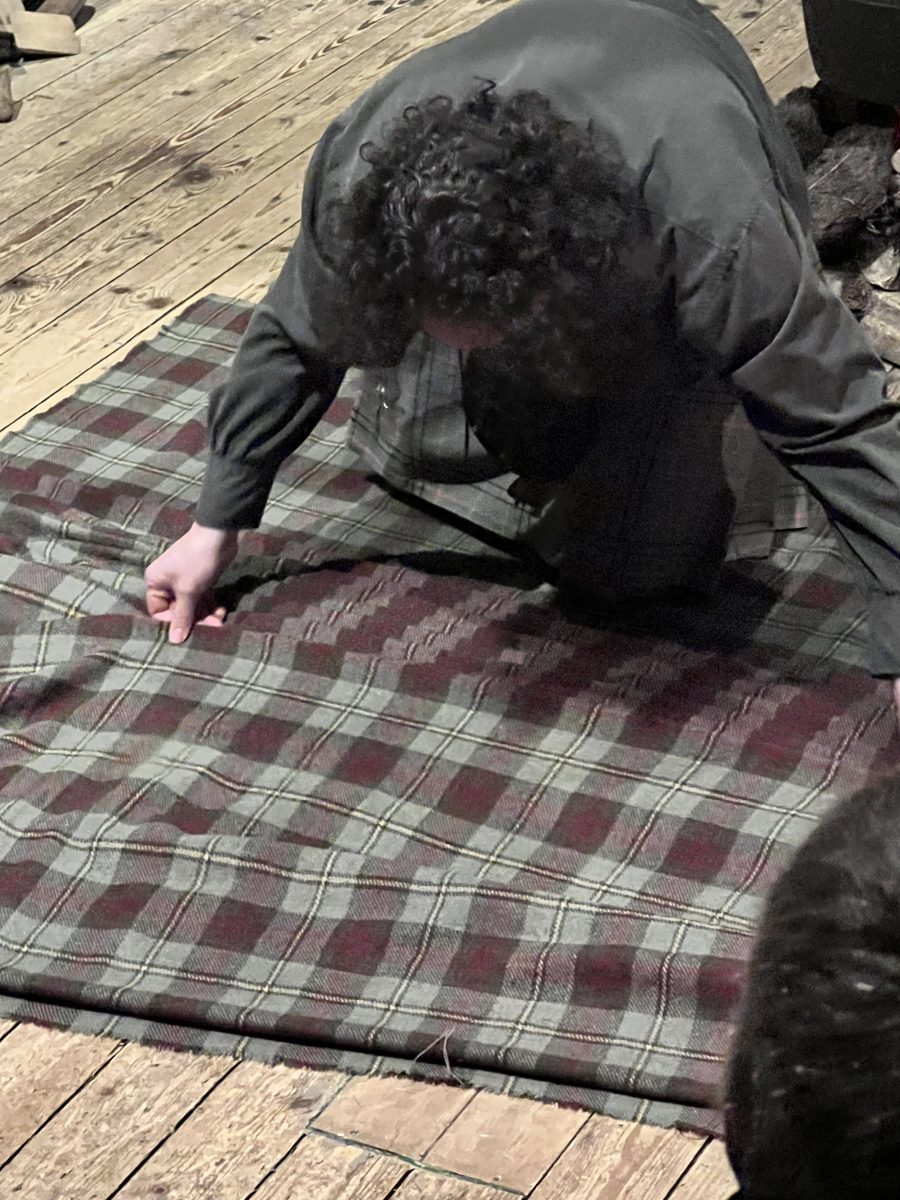Today we are heading to Loch Ness. The highlight of the week would be a boat cruise of Loch Ness. It would be 2 hours going the full length. Unfortunately, Jayne got word from the captain of the cruise boat that the trip was cancelled. It was too windy to take a group out on the lake. However we still headed to Fort Augustus to the Clansman Centre.
The lobby of the Balavil Hotel had a painting of a coos. I thought maybe this was a good omen.

On the way, passed a field with coos grazing. Colin wouldn’t stop the bus for me. Said he had a stop already planned.

The scenery was just breathtaking. Really makes me want to come back and just do the Highlands tour.


Colin stopped at a popular view of the Great Glen. As you can tell from the video, it was very windy up there. The light mist, although it covered the mountains, gave a textured quality to the scene.
We had a private demonstration at the Clan Centre in Fort Augustus. It’s made up to look like a Highlander’s home – just bigger for demo purposes. There were elevated benches for us to sit and an air conditioner. The building is 19th Century and was a prison for children. The sleeping area in the back. Men would sleep on the floor.

Our guide had just come out of quarantine for COVID. He was the first Scot guide we encountered who wore a mask. The clans were the families that lived off the land in the Highlands. They learned to fight from an early age. The men went off to hunt and fight. The women looked after the bairns and protected the home and property.

The clan chief had the final say on clan matters. He also carried the bloodline. The word clan means children. The Mac in Macdonald means son of Donald. By the 1600s the land boundaries had been set. The home would be known as a black house – stone walls, thatched roof. The burning peat would give off the black smoke, taring the beams of the roof which helped to preserve them. The smoke would also cure the hanging meats.

The main demonstration was how to plead the kilt. I asked about clan tartans. He said the idea of a clan having its own tartan did not exist until the 1800s. 1815 was the official registration of clan tartans. Sir Walter Scott was responsible for the modern Highland look.
The Highland plaid is the ancestor of the modern kilt. it would have been about 8 yards of material. It had become a commodity so the more material, the more money the plaid maker made. For the demonstration he used 5 metres of material. It was a tight weave. They could wrap themselves fully on a cold night. Everything the Highlander needed – coat, sleeping bag, camouflage.

After the battle Culloden, the plaid was banned. Most Highlanders could not afford that amount of material. The aristocracy and military continued to wear them. The weaving industry had been so decimated by the English that 2 or 3 generations of Highlanders did not wear plaid.

The plaid lines were used to line up the fold crease. The folds were used to gather all that material into a convenient space.

After so much time being used in the wilds, the plaid would get quite dirty. A pot of half hot water and urine would be used to clean it. Everyone contributed to the urine pot.


One of our group volunteered to wear the kilt. Lying down so the edge is at the back of the knees. Fold the material over the body and use a sash to tie it tight. All the material is gathered together in the back allowing the Highlander to walk and run.

The material can be gathered and tucked in the front.

It can be wrapped around the back like a shawl.

Or brought around the shoulder and pinned with a brooch.

Similarly, the women would be wrapped in a plaid but with not as much material.

Finally, there was a demonstration of the versatility of the Lochaber Axe and the many different ways it could kill someone. Jim really enjoyed that part.

Went for a walk down to the edge of Loch Ness. It was calm in the bay but you can tell from the video just how windy it was. So Nelly will have to wait to greet me with her warmth and charm.
On the way back to the hotel, we stopped to view The Old Bridge. It was one of a thousand built between 1800 and 1819 to improve Highland communication. This one improved the military road between Inverness and Fort Augustus.


So even though our Loch Ness boat cruise was cancelled, we saw some magnificent scenery, learned about Highland life. Now it was time to visit Urquhart Castle.
